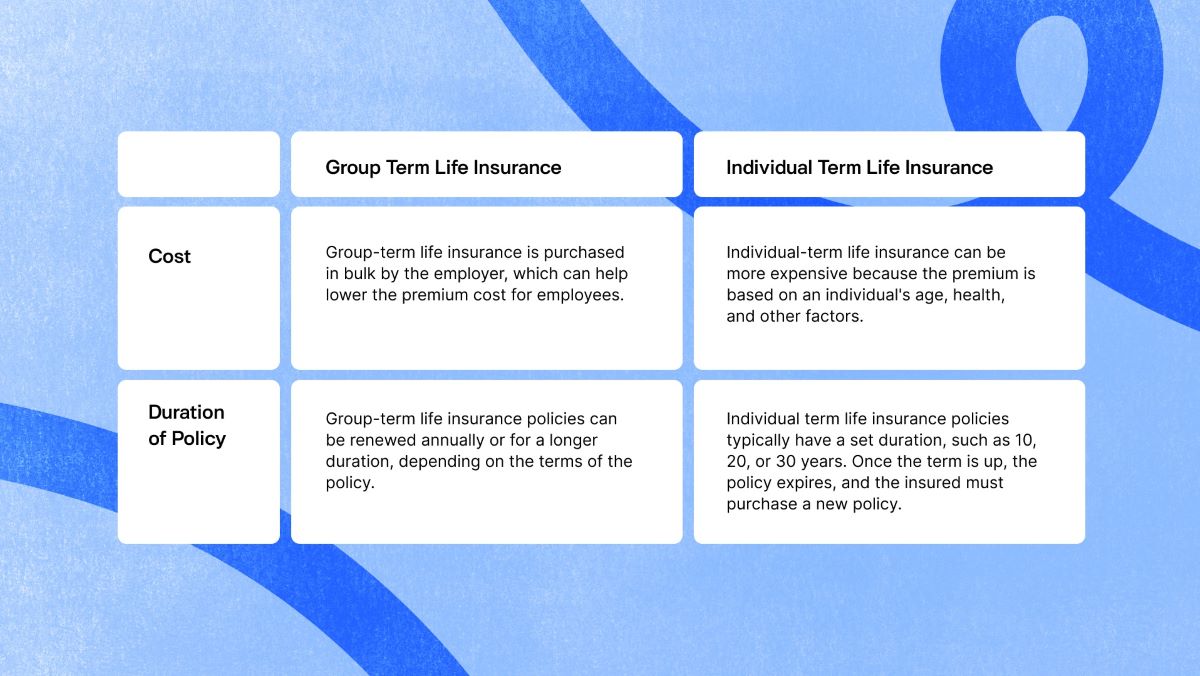Home>Finance>What Type Of Changes Can Be Made To A Guaranteed Renewable Health Insurance Policy?


Finance
What Type Of Changes Can Be Made To A Guaranteed Renewable Health Insurance Policy?
Modified: December 30, 2023
Discover the possible changes that can be made to your guaranteed renewable health insurance policy. Explore the finance options available for modifying your coverage.
(Many of the links in this article redirect to a specific reviewed product. Your purchase of these products through affiliate links helps to generate commission for LiveWell, at no extra cost. Learn more)
Table of Contents
- Introduction
- Understanding Guaranteed Renewable Health Insurance Policies
- Benefits of Guaranteed Renewable Policies
- Limitations of Guaranteed Renewable Policies
- Types of Changes that Can be Made to a Guaranteed Renewable Health Insurance Policy
- Changing the Premium Rate
- Modifying Coverage Benefits
- Altering Deductibles and Copayments
- Adjusting Policy Terms and Conditions
- Implications and Considerations for Policyholders
- Steps to Take When Requesting Changes to a Guaranteed Renewable Policy
- Conclusion
Introduction
Welcome to the world of health insurance, where having the right policy is essential for peace of mind and financial security. One type of policy that offers stability and flexibility is a guaranteed renewable health insurance policy. These policies are designed to provide individuals and families with coverage that can be adjusted according to their changing needs. In this article, we will explore what guaranteed renewable health insurance policies are and delve into the various changes that can be made to them.
Guaranteed renewable health insurance policies are contracts between policyholders and insurance companies that guarantee the policy can be renewed year after year, regardless of changes in the policyholder’s health condition. This means that as long as the policyholder pays their premiums on time, the insurance company cannot cancel their coverage. This is particularly beneficial for individuals who have pre-existing medical conditions or who anticipate potential health issues in the future.
There are numerous advantages to having a guaranteed renewable health insurance policy. First and foremost, it provides stability in coverage. With a guaranteed renewable policy, you can rest assured knowing that your coverage will continue as long as you fulfill your premium obligations. This is especially important in times of uncertainty, such as sudden illness or injury.
Furthermore, guaranteed renewable policies offer flexibility. As your healthcare needs change over time, you may find that your current coverage is insufficient or no longer meets your requirements. In such cases, a guaranteed renewable policy allows you to make changes to your plan without being denied coverage or experiencing a lapse in insurance.
Despite the advantages, it is essential to understand that guaranteed renewable policies also have their limitations. While the policy cannot be canceled due to changes in your health, the insurance company may make changes to the premium rates and coverage benefits. These changes must be applied to all policyholders within the same class and are subject to approval from the regulatory authorities.
In the following sections, we will delve into the specific types of changes that can be made to a guaranteed renewable health insurance policy, including premium rate modifications, coverage benefit adjustments, deductible and copayment alterations, and changes to policy terms and conditions. We will also provide insights and considerations for policyholders who are considering requesting changes to their policy.
It is important to note that the availability of changes may vary depending on the specific policy and insurance provider. Therefore, it is always recommended to review the terms and conditions of your policy or consult with a knowledgeable insurance professional before making any modifications.
Understanding Guaranteed Renewable Health Insurance Policies
Before diving into the details of changes that can be made to a guaranteed renewable health insurance policy, it is important to have a solid understanding of what these policies entail. A guaranteed renewable health insurance policy is a type of health insurance contract that provides policyholders with the assurance that their coverage can be renewed annually, regardless of changes in their health condition or claims history.
This type of policy is particularly beneficial for individuals who may have pre-existing medical conditions or anticipate potential health issues in the future. With a guaranteed renewable policy, the insurance company is obligated to continue providing coverage as long as the policyholder pays their premiums on time. This offers peace of mind and financial security, knowing that your coverage won’t be terminated due to undisclosed medical conditions or changes in your health.
Guaranteed renewable policies differ from non-cancellable policies in that the insurance company has the right to increase premium rates and make changes to the coverage benefits. However, these changes must be applied to all policyholders within the same class and are subject to approval from the regulatory authorities.
It is important to note that guaranteed renewable policies have certain limitations. For example, they may have specific waiting periods for coverage of certain conditions or treatments. Pre-existing medical conditions may also be subject to waiting periods before coverage is provided. These waiting periods can vary depending on the policy and insurance provider.
Additionally, guaranteed renewable policies are typically renewable until a specified age, such as 65 or 70. Once the policyholder reaches the maximum age, the insurance company may offer alternative coverage options or terminate the policy altogether. It is essential to review the policy terms and conditions to understand the specific renewal terms and age limits.
When considering a guaranteed renewable policy, it is crucial to assess the coverage benefits and limitations. Understand what medical services and treatments are covered, as well as any exclusions or limitations. Additionally, consider the level of coverage provided, such as the maximum benefit amount or percentage of reimbursement. Understanding these details will help you make an informed decision when selecting a guaranteed renewable health insurance policy.
Overall, guaranteed renewable health insurance policies offer individuals and families a stable and flexible means of securing coverage. By providing the reassurance of renewability, these policies help ensure that your health and financial well-being are protected for the long term. In the next sections, we will explore the different types of changes that can be made to a guaranteed renewable policy, allowing you to customize your coverage to better suit your evolving healthcare needs.
Benefits of Guaranteed Renewable Policies
Guaranteed renewable health insurance policies offer numerous advantages to policyholders, providing them with peace of mind and flexibility. Below, we discuss some of the key benefits of having a guaranteed renewable policy.
Continuity of Coverage: One of the primary advantages of a guaranteed renewable policy is that it ensures continuity of coverage. As long as the policyholder pays their premiums on time, the insurance company cannot cancel their coverage. This is particularly beneficial for individuals with pre-existing medical conditions or those who anticipate potential health issues in the future. With a guaranteed renewable policy, they can have confidence that their coverage will remain in place, offering protection when they need it most.
Flexibility to Make Changes: Guaranteed renewable policies also offer policyholders the flexibility to make changes to their coverage as their healthcare needs evolve. This means that if your current coverage is no longer sufficient or no longer meets your requirements, you can adjust your policy without the fear of being denied coverage or experiencing a lapse in insurance.
Protection against Rate Increases: Another advantage of guaranteed renewable policies is that they protect policyholders against sudden and significant premium rate increases. While premium rates can be adjusted, any changes must be applied to all policyholders within the same class and are subject to approval from the regulatory authorities. This helps provide some level of stability and predictability in terms of premium costs.
Access to Preventive Services: Guaranteed renewable policies often include coverage for preventive services, such as screenings, vaccinations, and wellness visits. These services are essential for maintaining good health and can help detect potential health issues early on, leading to better health outcomes and potentially reducing long-term healthcare costs.
Ability to Customize Coverage: With a guaranteed renewable policy, you have the ability to tailor your coverage to meet your specific needs. This includes selecting the level of coverage, such as the maximum benefit amount or percentage of reimbursement, as well as adding additional coverage options for specific treatments or services that are important to you.
Protection in Times of Uncertainty: Life is unpredictable, and unexpected health issues or accidents can occur at any time. Having a guaranteed renewable policy ensures that you have the financial protection you need during these uncertain times. It provides a safety net, giving you the peace of mind that your medical expenses will be covered, even in challenging situations.
Greater Choice of Healthcare Providers: Depending on the policy, guaranteed renewable policies may offer a wider range of healthcare providers to choose from. This can be particularly beneficial for individuals who have a preferred doctor or specialist and want to ensure they can continue to receive care from their trusted healthcare professionals.
Overall, guaranteed renewable health insurance policies offer a range of benefits that provide policyholders with stability, flexibility, and peace of mind. They allow individuals and families to customize their coverage, protect themselves against unexpected healthcare costs, and ensure continuity of coverage over the long term.
Limitations of Guaranteed Renewable Policies
While guaranteed renewable health insurance policies offer many benefits, it is important to be aware of their limitations. Understanding these limitations will help you make informed decisions about your coverage and ensure that you are fully prepared for any potential changes. Below, we discuss some of the key limitations of guaranteed renewable policies.
Premium Rate Adjustments: While the insurance company cannot cancel a guaranteed renewable policy due to changes in your health, they do have the ability to make adjustments to premium rates. These adjustments are typically based on factors such as the rising cost of healthcare, changes in the overall risk pool, or the insurance company’s financial performance. It’s important to be aware that premium rate increases can occur over time, which may impact the affordability of your policy.
Changes to Coverage Benefits: In addition to premium rate adjustments, insurance companies may also make changes to the coverage benefits offered under a guaranteed renewable policy. These changes can include modifications to the list of covered services, changes in the reimbursement rates, or adjustments in the policy’s maximum benefit limits. These changes are typically applied to all policyholders within the same class and must be approved by the regulatory authorities. It’s important to review any changes in coverage benefits to ensure that they still align with your healthcare needs.
Waiting Periods and Pre-existing Conditions: Guaranteed renewable policies may have waiting periods for certain conditions or treatments. These waiting periods refer to a specific period of time that must pass before coverage is provided for a particular condition. Pre-existing medical conditions are often subject to waiting periods as well. It’s crucial to review the policy terms to understand the waiting periods and any restrictions related to pre-existing conditions.
Age Limits: Guaranteed renewable policies typically have a maximum age at which the policy can be renewed. Once the policyholder reaches this age limit, the insurance company may offer alternative coverage options or terminate the policy altogether. It’s essential to review the policy terms and renewal age limits to understand what happens when you reach this milestone.
Exclusions and Limitations: Like any insurance policy, guaranteed renewable policies may have certain exclusions or limitations. These exclusions can vary depending on the policy and insurance provider. It’s important to review the policy’s terms and conditions carefully to understand any specific exclusions or limitations that may apply to your coverage.
Regulatory Approval: Any changes made to premium rates or coverage benefits in a guaranteed renewable policy must be approved by the regulatory authorities. This means that the insurance company cannot make arbitrary changes without proper oversight. However, regulatory approval can sometimes lead to delays in implementing changes or adjustments, which may impact your policy and coverage.
Understanding the limitations of guaranteed renewable policies is crucial for managing expectations and making informed decisions about your coverage. It’s important to review the policy terms and conditions carefully, ask questions, and seek clarification from your insurance provider or a knowledgeable insurance professional if needed.
Next, we will delve into the types of changes that can be made to a guaranteed renewable health insurance policy, allowing you to understand the options available for customizing your coverage to better suit your evolving healthcare needs.
Types of Changes that Can be Made to a Guaranteed Renewable Health Insurance Policy
A guaranteed renewable health insurance policy offers policyholders the flexibility to make changes to their coverage as their healthcare needs evolve. These changes can help ensure that your policy remains tailored to your specific requirements. Here are some of the key types of changes that can be made to a guaranteed renewable health insurance policy:
Changing the Premium Rate: Insurance companies may adjust the premium rates for guaranteed renewable policies. These adjustments are typically based on factors such as the rising cost of healthcare, changes in the overall risk pool, or the insurance company’s financial performance. Premium rate changes must be applied to all policyholders within the same class and are subject to regulatory approval. It’s important to review any premium rate changes and assess their impact on your budget before accepting them.
Modifying Coverage Benefits: Insurance companies may also make changes to the coverage benefits offered under a guaranteed renewable policy. This can include adding or removing specific services or treatments, adjusting the reimbursement rates, or modifying the maximum benefit limits. These changes are typically aimed at aligning the coverage with industry standards and may be subject to regulatory approval. It’s essential to review any changes in coverage benefits to ensure that your policy still meets your healthcare needs.
Altering Deductibles and Copayments: Deductibles and copayments are key aspects of health insurance policies. These out-of-pocket costs can impact the affordability of your coverage. With a guaranteed renewable policy, you may have the option to adjust the deductibles and copayments associated with your plan. Increasing the deductible can help lower your premium, while decreasing the deductible or copayment can result in higher upfront costs but lower out-of-pocket expenses for healthcare services. It’s important to carefully consider your budget and healthcare needs when making changes to these aspects of your policy.
Adjusting Policy Terms and Conditions: Policyholders may also have the ability to adjust certain terms and conditions in their guaranteed renewable policy. This can include changes to the length of the policy term, renewal age limits, or any waiting periods associated with specific conditions or treatments. Depending on the insurance company and policy, these adjustments may be possible within certain limits. It’s important to review the policy terms and conditions or consult with your insurance provider to understand the options available for making changes to the policy’s terms and conditions.
When considering making changes to your guaranteed renewable health insurance policy, it’s important to carefully assess your healthcare needs, budget, and any potential impact on coverage. It’s also advisable to consult with your insurance provider or a knowledgeable insurance professional who can guide you through the process and help you make informed decisions. Remember that any changes made to the policy are subject to approval from the insurance company and regulatory authorities.
Now that you are familiar with the types of changes that can be made to a guaranteed renewable policy, we will discuss the implications and considerations for policyholders who are considering requesting changes to their policy.
Changing the Premium Rate
One of the potential changes that can be made to a guaranteed renewable health insurance policy is adjusting the premium rate. Premium rates may be subject to change due to various factors such as rising healthcare costs, changes in the risk pool, or the insurance company’s financial performance. It’s important for policyholders to understand the implications and considerations when it comes to changing the premium rate.
When insurance companies propose a premium rate increase, they typically analyze data on claims, healthcare expenses, and other relevant factors to justify the adjustment. The proposed changes must be submitted to regulatory authorities for approval and must be applied to all policyholders within the same class, ensuring fairness and consistency.
As a policyholder, it is important to carefully review any proposed premium rate changes. Consider factors such as your budget and ability to afford the new premium. Determine if the increase is reasonable and justifiable based on market trends and the insurance company’s performance. Assess the impact on your financial situation and whether the benefits provided by the policy still outweigh the cost.
In some cases, you may have the option to adjust your coverage or benefits to potentially offset part of the premium rate increase. For example, increasing deductibles, copayments, or reducing coverage for specific services may help reduce the premium. However, it’s essential to evaluate the potential impact of these changes on your out-of-pocket expenses and overall coverage.
If the proposed premium rate increase is not affordable or reasonable for your circumstances, you may consider shopping around for alternative policies. While it may involve the hassle of applying for a new policy and potentially going through medical underwriting, it can be a viable solution to find more affordable coverage.
It’s important to note that premium rate changes can vary from one policy to another and from one insurance provider to another. Additionally, regulatory authorities closely monitor and regulate premium rate adjustments to ensure policyholders are protected from excessive increases. It’s advisable to review the terms and conditions of your policy, consult with your insurance provider, or seek guidance from a knowledgeable insurance professional to navigate the process and make an informed decision.
When considering any changes to the premium rate, it’s crucial to ensure that you maintain continuous coverage. Timely payment of premiums is essential to ensure that your policy remains in force and that you have the necessary protection when unexpected medical needs arise.
Overall, changing the premium rate is a significant consideration for policyholders. It is crucial to carefully evaluate the proposed changes, assess their impact on your overall financial situation, and consider alternatives if necessary. By being informed and proactive, you can make the best decision regarding your health insurance coverage.
Modifying Coverage Benefits
In addition to adjusting the premium rate, another type of change that can be made to a guaranteed renewable health insurance policy is modifying the coverage benefits. Insurance companies may make changes to the list of covered services, reimbursement rates, or maximum benefit limits. It’s important for policyholders to understand the implications and considerations when it comes to modifying coverage benefits.
When insurance companies propose changes to the coverage benefits, they take into account factors such as market trends, medical advancements, and the overall cost of healthcare. These changes must be submitted to regulatory authorities for approval and must be applied to all policyholders within the same class to ensure fairness.
As a policyholder, it’s crucial to review any proposed changes to the coverage benefits. Carefully assess how the modifications would impact your ability to access necessary healthcare services and treatments. Consider whether any services that are important to you or your family members will be affected by the change. Evaluate if the proposed modifications align with your healthcare needs and priorities.
If the proposed changes significantly impact your coverage or limit access to essential services or treatments, you may need to explore alternative coverage options. This could involve shopping around for different policies or considering supplemental insurance that can provide additional coverage for specific treatments or services excluded by the modified benefits.
On the other hand, if the proposed changes result in expanded coverage or improved benefits, it may be a positive development for policyholders. Take the time to fully understand the extent of the changes and how they would enhance your overall coverage. Carefully review the policy documents to ensure that any promised improvements are implemented effectively.
When considering modifying coverage benefits, it’s essential to maintain a balance between the cost and value of the policy. Evaluate how any changes will impact your out-of-pocket expenses and whether the benefits provided still align with your healthcare needs and budget.
It’s important to note that the ability to modify coverage benefits can vary depending on the policy and insurance provider. Not all policies may offer flexibility in making changes, or the scope of modifications may be limited. It’s advisable to review the terms and conditions of your policy, consult with your insurance provider, or seek guidance from a knowledgeable insurance professional to fully understand the options available to you.
Remember that any changes to the coverage benefits must be authorized by regulatory authorities and should take into account the needs and interests of policyholders. Stay informed about any proposed modifications and take an active role in assessing their impact on your coverage. By understanding and making informed decisions, you can ensure that your health insurance remains relevant and valuable as your healthcare needs evolve.
Altering Deductibles and Copayments
When it comes to guaranteed renewable health insurance policies, one of the options available for policyholders is altering deductibles and copayments. Deductibles and copayments are out-of-pocket costs that policyholders are responsible for paying when they receive healthcare services. Making changes to these aspects of the policy can have significant implications on both premium costs and out-of-pocket expenses.
Increasing Deductibles: A deductible is the amount that policyholders must pay out-of-pocket before the insurance company begins to cover the costs. By increasing the deductible, policyholders can potentially lower their premium costs. However, it’s essential to carefully consider your ability to afford the higher out-of-pocket expenses associated with a higher deductible. It may be more suitable for individuals who rarely seek healthcare services or are in excellent health, as they may have fewer medical expenses throughout the year.
Decreasing Deductibles: On the other hand, policyholders may choose to decrease their deductibles if they anticipate higher medical expenses or have ongoing healthcare needs. A lower deductible would mean that policyholders reach their coverage threshold sooner, reducing their initial out-of-pocket expenses. However, it’s important to note that lower deductibles often result in higher premium costs.
Adjusting Copayments: Copayments are fixed amounts that policyholders are required to pay when they receive specific healthcare services, such as doctor visits or prescription medications. Policyholders may have the option to adjust copayments depending on their budget and anticipated usage of healthcare services. Increasing copayments can lead to lower premium costs, while decreasing copayments may result in higher premiums.
When considering altering deductibles and copayments, it’s crucial to strike a balance between premium costs and out-of-pocket expenses. Assessing your healthcare needs, budget, and risk tolerance will help determine the most suitable deductible and copayment levels for your situation.
It’s also important to remember that changing deductibles and copayments affects the overall cost-sharing arrangement between the policyholder and the insurance company. Consider how changes to these amounts may impact your ability to pay for necessary healthcare services or prescription medications.
Additionally, keep in mind that altering deductibles and copayments may come with certain restrictions or limitations imposed by the insurance policy. Some policies may have minimum or maximum limits on deductibles or copayments that can be selected. Review your policy documents to understand any specific guidelines regarding these changes.
It’s highly recommended to consult with your insurance provider or a knowledgeable insurance professional when considering changes to deductibles and copayments. They can provide guidance and insights specific to your policy and ensure that you fully understand the implications of the changes you are making.
By carefully evaluating your healthcare needs, budget, and risk tolerance, you can make informed decisions about altering deductibles and copayments. Finding the right balance will help you manage your costs effectively while ensuring that you have the necessary coverage when you need it.
Adjusting Policy Terms and Conditions
Policyholders of guaranteed renewable health insurance policies may have the option to adjust certain terms and conditions within their policies. These adjustments can provide greater flexibility and customization, allowing policyholders to better align their coverage with their healthcare needs. Here are some common aspects of policy terms and conditions that can be adjusted:
Policy Term: The policy term refers to the duration for which the policy remains in force. In some cases, policyholders may have the option to adjust the length of the policy term. For example, you may be able to extend the policy for longer periods or choose a shorter term if it better suits your needs. It’s important to consider factors such as expected changes in healthcare needs, financial constraints, and overall coverage requirements when making adjustments to the policy term.
Renewal Age Limits: Guaranteed renewable policies typically have a maximum age at which the policy can be renewed. However, depending on the policy and insurance provider, there may be options to adjust the renewal age limits. This can be beneficial if you anticipate needing coverage beyond the initial age limit stated in the policy. Reviewing the renewal age limits and understanding the options for adjusting them is crucial for long-term planning and ensuring continuous coverage as you age.
Waiting Periods: Waiting periods refer to the time that must pass before coverage is provided for certain conditions or treatments. While waiting periods are often applied to pre-existing medical conditions, they can also be applicable to specific treatments or services. In certain cases, policyholders may have the ability to adjust waiting periods, reducing the time required before coverage becomes effective. This can accelerate access to certain healthcare services and treatments.
Other Policy Conditions: There may be other specific policy conditions that can be adjusted depending on the insurance provider and policy terms. For example, you may have the option to add or remove certain optional benefits or riders to customize your coverage. It’s important to carefully review the policy documents and consult with your insurance provider to understand the specific conditions that can be adjusted.
When adjusting policy terms and conditions, it’s crucial to carefully consider the implications and potential impact on your coverage. Assessing your anticipated healthcare needs, budget, and long-term goals will help guide your decision-making process.
It’s important to note that the ability to adjust policy terms and conditions may vary between insurance providers and policies. Some policies may have specific limitations or restrictions on certain adjustments. It’s advisable to review your policy documents, consult with your insurance provider, or seek guidance from a knowledgeable insurance professional to better understand the options available to you.
When considering adjustments to policy terms and conditions, be mindful of the potential impact on premium costs, coverage limitations, and overall benefits. Striking a balance between flexibility and the financial implications of the changes will help ensure that your policy remains tailored to your changing healthcare needs.
By taking an active role in understanding and evaluating your policy’s terms and conditions, you can make informed decisions about the adjustments that best align with your individual circumstances and goals.
Implications and Considerations for Policyholders
As a policyholder of a guaranteed renewable health insurance policy, there are important implications and considerations to keep in mind when making changes or adjustments to your coverage. Understanding these factors will help you navigate the decision-making process and ensure that your policy continues to meet your healthcare needs. Here are some key implications and considerations for policyholders:
Assessing Current and Future Healthcare Needs: Before making any changes to your policy, it’s crucial to assess your current and anticipated healthcare needs. Consider factors such as your age, lifestyle, pre-existing conditions, and any upcoming life events that may impact your healthcare requirements. This evaluation will help guide the adjustments you make to your coverage.
Evaluating Affordability and Budget: Consider the financial implications of any changes to your coverage, such as adjustments to premium rates, deductibles, copayments, or policy terms. Assess your budget and ensure that the changes you make align with your financial capabilities. Striking a balance between premium costs and out-of-pocket expenses is essential to maintain comprehensive coverage without risking financial strain.
Reviewing Proposed Changes: If your insurance provider proposes changes to your policy, carefully review the details. Understand the reasons behind the changes, whether it’s related to rising healthcare costs, regulatory requirements, or other factors. Evaluate the impact these changes will have on your coverage and assess whether the benefits provided still meet your needs. Take the time to ask questions and seek clarification from your insurance provider or a knowledgeable professional.
Understanding Regulatory Approvals: Changes to your policy, such as premium rate adjustments or modifications to coverage benefits, may require regulatory approval. It’s important to be aware of the regulatory process and the potential timeline involved in implementing changes. Recognize that these approvals are in place to protect policyholders’ interests and ensure fair practices within the insurance industry.
Exploring Alternative Coverage Options: If the proposed changes or existing coverage no longer meet your needs or budget, it may be worth considering alternative coverage options. Shopping around for different policies, exploring supplemental insurance, or seeking coverage from different insurance providers can provide you with more choices and potentially better value for your healthcare needs.
Considering Impact on Continuity of Coverage: When making changes to your policy, it’s crucial to ensure continuity of coverage. Timely payment of premiums, maintaining a good standing with your insurance provider, and adhering to policy requirements are important for uninterrupted coverage. Be aware of any potential gaps or lapses in coverage that may occur during the adjustment process.
Seeking Guidance and Professional Advice: Insurance policies can be complex, and making decisions about changes to your coverage may require guidance from an insurance professional. Consult with your insurance provider, ask questions, and seek advice from a knowledgeable agent or broker. They can provide valuable insights and help you make informed decisions that align with your healthcare needs and financial situation.
By considering these implications and factors as a policyholder, you can navigate the process of making changes to your guaranteed renewable health insurance policy more effectively. By staying informed, assessing your needs, and seeking professional guidance when needed, you can ensure that your coverage continues to provide the necessary protection and peace of mind for your healthcare journey.
Steps to Take When Requesting Changes to a Guaranteed Renewable Policy
When you decide to request changes to your guaranteed renewable health insurance policy, it’s important to follow a systematic approach to ensure a smooth and effective process. Here are the key steps to take when requesting changes to your policy:
Step 1: Review Your Policy: Start by reviewing your current policy documents, including the terms and conditions, coverage benefits, deductibles, copayments, and any previous correspondence from your insurance provider. Understand the specifics of your policy and identify the areas you wish to modify or explore further.
Step 2: Identify Your Healthcare Needs: Assess your healthcare needs and evaluate how they have changed or are expected to change. Consider factors such as changes in your health status, upcoming medical treatments, or new healthcare requirements. This evaluation will help you identify the areas of your policy that may need adjustment.
Step 3: Contact Your Insurance Provider: Reach out to your insurance provider to initiate the conversation about the changes you want to make. Contact their customer service department or your assigned agent/broker. Provide them with all relevant information, including your policy number, desired modifications, and reasons for the changes.
Step 4: Understand Available Options: During your discussion with the insurance provider, seek a clear understanding of the options available for making changes to your policy. Inquire about any limitations, restrictions, or additional requirements that may affect the modifications. This will ensure that you have a realistic understanding of what can be adjusted within your policy.
Step 5: Gather Required Documentation: Depending on the changes you wish to make, you may need to provide certain documentation to support your request. This can include medical records, invoices, or any other relevant documentation that substantiates the need for the changes you are proposing. Gather these documents and have them ready for submission if required.
Step 6: Review Proposed Changes: If the insurance provider presents you with proposed changes to your policy, carefully review the details. Assess how the proposed modifications align with your healthcare needs, budget, and goals. Take the time to ask for clarification and make sure you understand the impact of these changes before accepting or rejecting them.
Step 7: Seek Professional Advice: If you’re uncertain about the implications of the proposed changes or need further guidance, consider consulting with a knowledgeable insurance professional. An agent or broker can help you navigate the process, offer insights, and ensure that you make informed decisions about adjusting your policy.
Step 8: Evaluate Financial Considerations: Assess the financial implications of the requested changes. Review the impact on your premium costs, out-of-pocket expenses, and overall budget. Consider how the modifications align with your financial capabilities and ensure that the adjustments you make provide a balance between cost and coverage.
Step 9: Document and Confirm Changes: Once you and the insurance provider have reached an agreement on the requested changes, document the modifications in writing. Ensure that you have a clear record of the changes made, including any updated policy documents, endorsements, or riders. Confirm the effective date of the changes and any adjustments to premium payments.
Step 10: Maintain Communication: Throughout the process of requesting and implementing changes, maintain open lines of communication with your insurance provider. Stay in touch with them to track the progress of your requests, address any questions or concerns, and ensure that the adjustments are implemented correctly.
By following these steps, you can navigate the process of requesting changes to your guaranteed renewable policy more effectively. Remember to stay informed, review the proposed modifications carefully, seek professional advice, and maintain clear communication with your insurance provider for a successful adjustment process.
Conclusion
Guaranteed renewable health insurance policies offer individuals and families stability and flexibility in their healthcare coverage. These policies allow policyholders to make necessary changes to their coverage as their healthcare needs evolve over time. Whether it’s adjusting premium rates, modifying coverage benefits, altering deductibles and copayments, or adjusting policy terms and conditions, policyholders have options to customize their policies to better suit their individual circumstances.
While guaranteed renewable policies provide numerous benefits, it’s important to carefully consider the implications and considerations associated with making changes. Assessing your healthcare needs, budget, and long-term goals is essential to ensure that the modifications align with your specific requirements. Understanding regulatory approvals, evaluating financial implications, and seeking professional advice are all key factors in making informed decisions about adjustments to your policy.
Maintaining open communication with your insurance provider throughout the process is crucial. From reviewing your current policy and identifying the changes you need to documenting the modifications and confirming the adjustments, staying in touch with your insurance provider ensures a smoother and more successful experience.
Remember, the availability of changes can vary between insurance providers and policies, so it’s important to review your policy documents and consult with your insurance provider or a knowledgeable insurance professional for a comprehensive understanding of the options available to you.
Ultimately, a guaranteed renewable health insurance policy provides the peace of mind of continuous coverage while offering the flexibility to adapt to changing needs. By taking proactive steps and making informed decisions, you can ensure that your policy remains relevant and valuable in meeting your healthcare needs both now and in the future.














